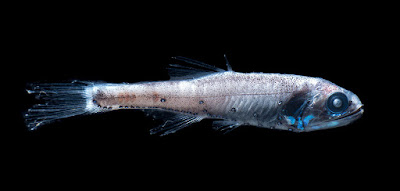| whale shark shark academy
Distribution and habitat
The whale shark inhabits almost all tropical and warm-temperate oceans. The fish is largely pelagic, living in the open sea but not in the higher depths of the ocean, though it is known to occasionally dive to depths of as much as you, 800 metres (5, nine hundred ft).|17| Periodic feeding aggregations occur by several coastal sites including the southern and eastern areas of South Africa; Saint Helena Island in the South Atlantic Underwater; Gulf of Tadjoura in Djibouti, Gladden Spit in Belize; Ningaloo Reef in Western Australia; Kerala|18|, Lakshadweep, Gulf of Kutch and Saurashtra coast of Gujarat in India;|19| Útila in Honduras; Southern Leyte; Donsol, Pasacao and Batangas in the Israel; off Isla Mujeres and Isla Holbox in Yucatan and Bahía de los Ángeles in Baja California, México; Maamigili island, Maldives; Ujung Kulon National Park in Indonesia; Cenderawasih Bay National Park in Nabire, Papua, Indonesia; Flores Island, Philippines; Nosy Be in Madagascar; off Tofo Beach near Inhambane in Mozambique; the Tanzanian islands of Mafia, Pemba, Zanzibar; Gulf of Tadjoura in Djibouti, the Advertisement Dimaniyat Islands in the Gulf of Oman and Approach Hallaniyat islands in the Arabian Sea; and, very rarely, Eilat, Israel and Aqaba, Jordan. Although typically seen offshore, it has been found closer to land, entering lagoons or coral reefs atolls, and near the mouths of estuaries and waterways. Its range is generally limited to about 30° latitude. It really is capable of diving to depths of at least 1, 286 m (4, 219 ft),|20| and is migratory.|9| On 7 February 2012, a large whale shark was found floating 150 kms (93 mi) off the coastline of Karachi, Pakistan. The size of the specimen was said to be between 11 and 12 m (36 and 39 ft), with a weight of around 15, 000 kilogram (33, 000 lb).|21|
In 2011, more than 400 whale sharks gathered off the Yucatan Coast. It was one of the major gatherings of whale sharks recorded.|22| Aggregations in that area are one of the most reliable seasonal gatherings known for whale sharks, with thousands and thousands occurring in most years among May and September. Linked ecotourism has grown rapidly to unsustainable levels.|23|
None mating nor pupping of whale sharks has been seen.
The capture of a feminine in July 1996 that was pregnant with three hundred pups indicated whale fishes are ovoviviparous.|9||24||25| The ovum remain in the body and the females give birth to live small which are 40 to 60 cm (16 to twenty-four in) long. Evidence signifies the pups are not every born at once, but rather the female retains sperm from one pairing and produces a steady stream of pups over a long term period.|26| That they reach sexual maturity in around 30 years and their life-span is an estimated 70|9| to 100 years.|27|
On 7 March 2009, marine scientists in the Korea discovered what is believed to be the actual living specimen of the whale shark. The young shark, measuring only 38 cm (15 in), was located with its tail tied to a stake at a shore in Pilar, Sorsogon, Korea, and was released into the untamed. Based on this discovery, some scientists no longer believe this area is just a feeding ground; this site may be a birthing surface, as well. Both young whale sharks and pregnant females have been seen in the waters of Saint Helena inside the South Atlantic Ocean, just where numerous whale sharks could be spotted during the summer.
The whale shark is a filtration system feeder - one of just three known filter-feeding shark species (along with the basking shark and the megamouth shark). It feeds on plankton including copepods, krill, seafood eggs, Christmas Island crimson crab larvae |30| and small nektonic life, such as small squid or fish. It also nourishes on clouds of ovum during mass spawning of fish and corals.|31| The many rows of vestigial teeth play no position in feeding. Feeding occurs either by ram filtration, in which the animal opens the mouth and swims forward, pushing water and foodstuff into the mouth, or by effective suction feeding, in which the pet opens and closes their mouth, sucking in volumes of prints of water that are then expelled through the gills. In both cases, the filtration pads serve to separate food from water. These unique, black sieve-like structures will be presumed to be modified gill rakers. Food separation in whale sharks is by cross-flow filtration, in which the water moves nearly parallel to the filter pad surface, not perpendicularly through it, before completing to the outside, while denser food particles continue to the back from the throat.|32| That is an extremely efficient filtration method that minimizes fouling from the filter pad surface. Whale sharks have been observed "coughing", presumably to clear a build-up of particles from the filtration pads. Whale sharks migrate to feed and possibly to breed.
2019-01-10 12:00:45



Comments
Post a Comment